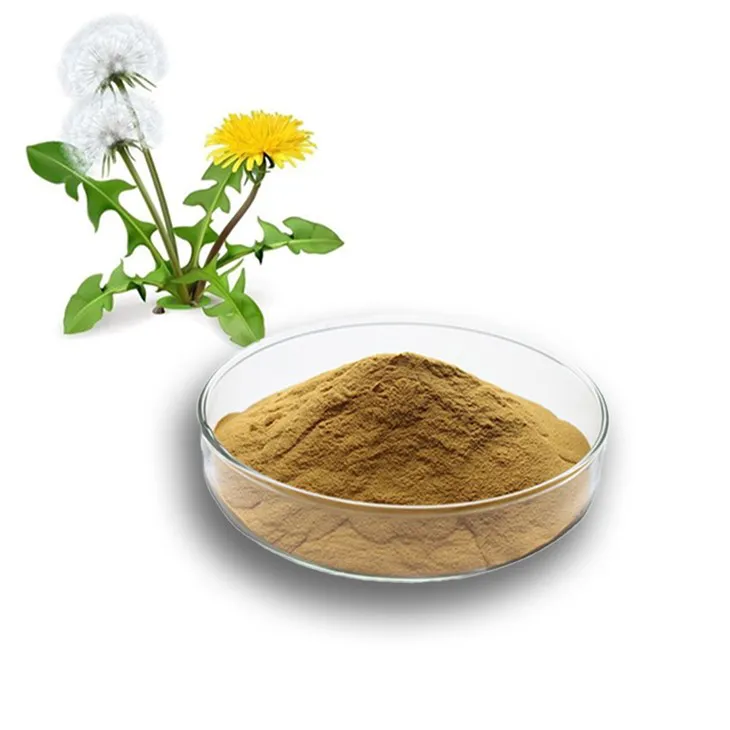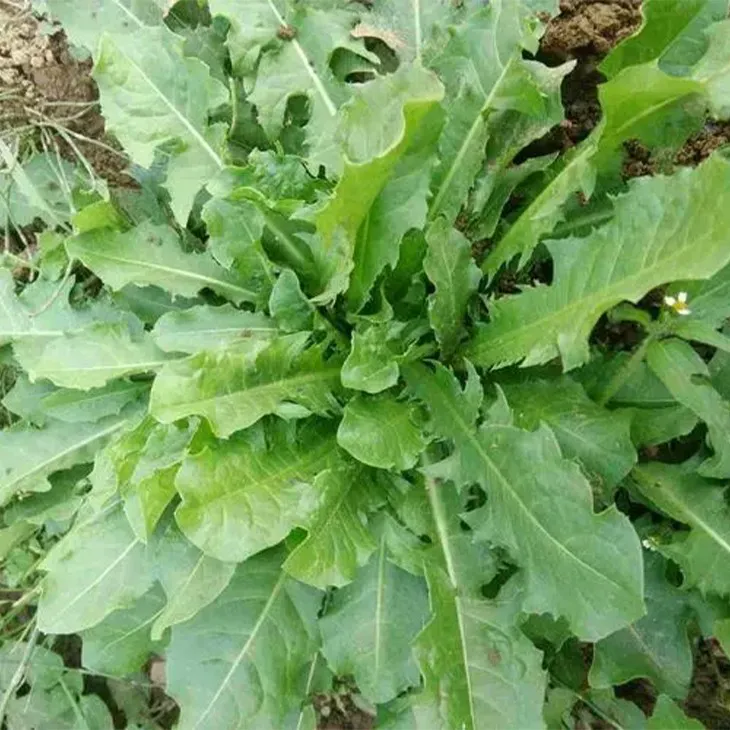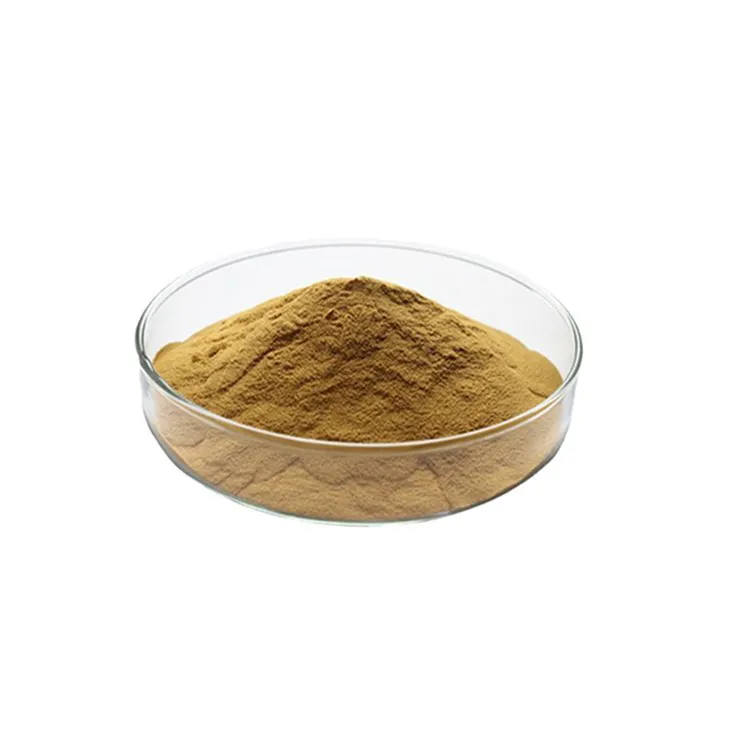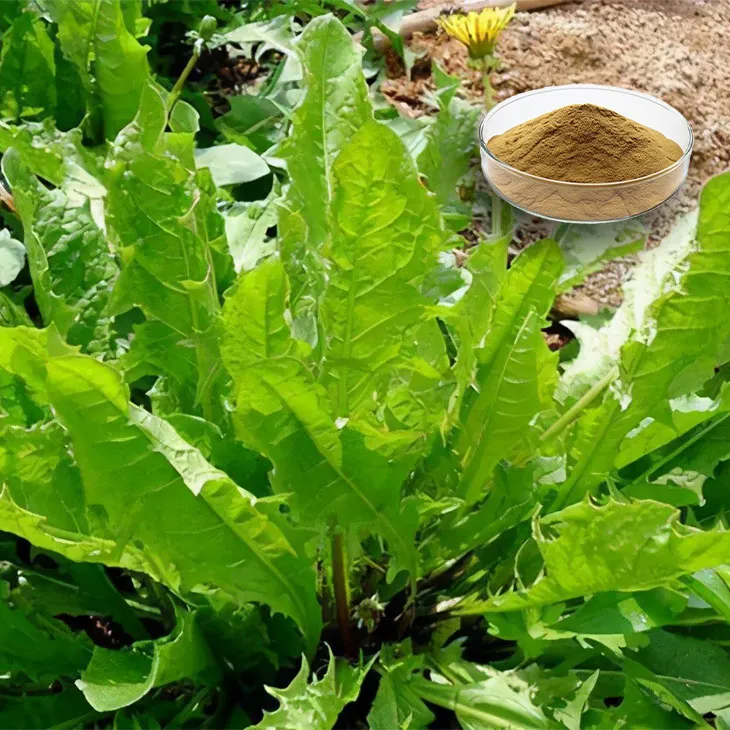- 0086-571-85302990
- sales@greenskybio.com
The process of extracting taraxasterol from dandelion leaf extract.
2024-11-28

1. Introduction
Taraxasterol is a significant bioactive compound found in dandelion leaves. It has attracted much attention due to its potential pharmacological properties, such as anti - inflammatory, antioxidant, and anti - cancer activities. The extraction of taraxasterol from Dandelion Leaf Extract is a multi - step process that demands precision and a good understanding of the chemical nature of the substances involved.

2. Collection and Preparation of Dandelion Leaves
2.1. Selection of Dandelion Plants
The first step in obtaining taraxasterol from dandelion leaves is to carefully select the dandelion plants. Wild dandelions are often preferred as they are less likely to be contaminated with pesticides or other chemicals. However, when collecting wild dandelions, it is crucial to ensure that they are not picked from polluted areas, such as near industrial sites or roadsides.
2.2. Harvesting the Leaves
Once the suitable dandelion plants are identified, the leaves are harvested. The best time for harvesting is usually in the spring or early summer when the leaves are young and tender. At this time, the concentration of bioactive compounds, including taraxasterol, may be relatively high. The leaves should be carefully plucked from the plant, avoiding damage to the remaining parts of the plant as much as possible.
2.3. Cleaning and Drying
After harvesting, the dandelion leaves need to be cleaned thoroughly to remove any dirt, debris, or insects. This can be done by gently washing the leaves in clean water. After cleaning, the leaves are dried. Drying can be achieved through natural drying in a well - ventilated area or by using a low - temperature drying device. Proper drying is essential as it helps to preserve the bioactive compounds in the leaves and prevent the growth of mold or bacteria.
3. Solvent Extraction
3.1. Selection of Solvents
Solvent extraction is a key step in obtaining the bioactive compounds from Dandelion Leaf Extract. Organic solvents such as ethanol and methanol are commonly used. Ethanol is often preferred because it is relatively safe, easy to obtain, and has a good solubility for many bioactive compounds. Methanol, on the other hand, has a higher solubility for some substances but is more toxic and requires more careful handling.
3.2. Extraction Process
The dried dandelion leaves are usually ground into a fine powder before extraction. This increases the surface area of the leaves, facilitating better contact with the solvent. A certain amount of the selected solvent is then added to the powdered dandelion leaves. The ratio of solvent to plant material is an important factor and needs to be optimized according to the specific extraction conditions. The mixture is then stirred or shaken for a certain period, usually several hours to days, at a specific temperature. This allows the bioactive compounds, including taraxasterol, to dissolve into the solvent.
3.3. Filtration
After the extraction process, the mixture is filtered to separate the liquid extract (containing the dissolved bioactive compounds) from the solid residue. Filtration can be carried out using various methods, such as using filter paper in a simple funnel or using a more advanced filtration device like a Buchner funnel. The filtered liquid extract is then collected for further purification.
4. Purification of Taraxasterol
4.1. Chromatography Techniques
Chromatography is a powerful purification technique used to isolate taraxasterol from the Dandelion Leaf Extract. There are different types of chromatography that can be applied, such as column chromatography, thin - layer chromatography (TLC), and high - performance liquid chromatography (HPLC).- In column chromatography, a column is filled with a stationary phase (such as silica gel or alumina), and the extract is passed through the column. Different compounds in the extract will interact differently with the stationary phase and the mobile phase (the solvent used for elution), resulting in their separation.
- Thin - layer chromatography involves spotting the extract on a thin layer of a stationary phase (usually silica gel coated on a plate). The plate is then placed in a developing chamber with a suitable solvent. As the solvent moves up the plate, different compounds will separate based on their different affinities for the stationary and mobile phases. TLC can be used for preliminary screening and identification of taraxasterol in the extract.
- High - performance liquid chromatography is a more advanced and precise chromatography technique. It uses a high - pressure pump to force the mobile phase through a column filled with a very fine stationary phase. HPLC can achieve high - resolution separation of taraxasterol from other compounds in the dandelion leaf extract and can also be used for quantitative analysis of taraxasterol.
4.2. Recrystallization
After chromatography, recrystallization can be used as an additional purification step. Recrystallization involves dissolving the partially purified taraxasterol in a suitable solvent at an elevated temperature and then allowing the solution to cool slowly. As the solution cools, taraxasterol will crystallize out of the solution, while impurities may remain in the solvent. The crystals of taraxasterol can be collected by filtration and further dried to obtain a more pure product.
5. Characterization and Quality Control
5.1. Chemical Characterization
Once the taraxasterol has been purified, it is necessary to characterize it chemically. This can be done through various spectroscopic techniques, such as infrared spectroscopy (IR), nuclear magnetic resonance spectroscopy (NMR), and mass spectrometry (MS).- Infrared spectroscopy can provide information about the functional groups present in taraxasterol. Different functional groups will absorb infrared radiation at specific wavelengths, allowing the identification of the types of bonds and groups in the molecule.
- Nuclear magnetic resonance spectroscopy, especially proton NMR and carbon - 13 NMR, can give detailed information about the structure of taraxasterol, including the connectivity of atoms and the chemical environment of different protons and carbons in the molecule.
- Mass spectrometry can determine the molecular weight of taraxasterol and can also provide information about its fragmentation pattern, which is useful for confirming its chemical structure.
5.2. Quality Control
Quality control is essential to ensure the purity and quality of the extracted taraxasterol. This includes testing for the presence of impurities, such as residual solvents, other bioactive compounds from the dandelion leaf extract that have not been completely removed, and any potential contaminants introduced during the extraction and purification processes.- Residual solvent analysis can be carried out using gas chromatography (GC) to ensure that the levels of solvents such as ethanol or methanol are within the acceptable limits.
- Purity determination can be done using techniques such as HPLC, comparing the chromatogram of the purified taraxasterol with a standard sample to ensure that the purity meets the required standards.
6. Conclusion
The extraction of taraxasterol from dandelion leaf extract is a complex process that involves multiple steps from the collection and preparation of dandelion leaves to solvent extraction, purification, and quality control. Each step requires careful attention to detail and a good understanding of the chemical and physical properties of the substances involved. With the increasing interest in the potential health benefits of taraxasterol, the development of efficient and reliable extraction methods is of great significance for further research and applications in the fields of medicine, nutrition, and cosmetics.
FAQ:
What are the main steps in extracting taraxasterol from dandelion leaf extract?
The main steps include carefully collecting and preparing dandelion leaves first. Then, using solvent extraction methods with organic solvents like ethanol or methanol to obtain bioactive compounds from the dandelion leaf extract. Finally, purification techniques such as chromatography are used to isolate taraxasterol.
Why are organic solvents like ethanol or methanol used in the extraction process?
Organic solvents like ethanol or methanol are often used because they are effective at dissolving the bioactive compounds present in the dandelion leaf extract. These solvents can help to extract a wide range of compounds from the plant material, which may contain taraxasterol among other substances.
What role does chromatography play in the extraction of taraxasterol?
Chromatography plays a crucial role in the purification stage. It helps to separate and isolate taraxasterol from other components in the dandelion leaf extract. Different components in the extract will move through the chromatographic system at different rates based on their chemical properties, allowing for the isolation of taraxasterol.
How important is the precise control of experimental conditions in this extraction process?
The precise control of experimental conditions is very important. Slight changes in factors such as temperature, solvent concentration, and extraction time can significantly affect the efficiency and selectivity of the extraction. It can influence the yield and purity of the taraxasterol obtained from the dandelion leaf extract.
What are the challenges in extracting taraxasterol from dandelion leaf extract?
Some challenges include ensuring the complete extraction of taraxasterol without co - extracting unwanted substances. Also, the purification process can be difficult as there may be many similar compounds in the dandelion leaf extract. Additionally, maintaining the stability of taraxasterol during the extraction and purification processes can be a challenge.
Related literature
- Isolation and Characterization of Taraxasterol from Dandelion (Taraxacum officinale) Extracts"
- "The Chemistry and Bioactivity of Taraxasterol: A Review with a Focus on Dandelion - Derived Compounds"
- ▶ Hesperidin
- ▶ Citrus Bioflavonoids
- ▶ Plant Extract
- ▶ lycopene
- ▶ Diosmin
- ▶ Grape seed extract
- ▶ Sea buckthorn Juice Powder
- ▶ Fruit Juice Powder
- ▶ Hops Extract
- ▶ Artichoke Extract
- ▶ Mushroom extract
- ▶ Astaxanthin
- ▶ Green Tea Extract
- ▶ Curcumin
- ▶ Horse Chestnut Extract
- ▶ Other Product
- ▶ Boswellia Serrata Extract
- ▶ Resveratrol
- ▶ Marigold Extract
- ▶ Grape Leaf Extract
- ▶ New Product
- ▶ Aminolevulinic acid
- ▶ Cranberry Extract
- ▶ Red Yeast Rice
- ▶ Red Wine Extract
-
Pomegranate Extract
2024-11-28
-
Tamarind extract powder
2024-11-28
-
Motherwort Extract
2024-11-28
-
Soy Extract
2024-11-28
-
Cactus Extract
2024-11-28
-
Citrus Aurantii Extract
2024-11-28
-
Resveratrol extract
2024-11-28
-
Yellow Pine Extract
2024-11-28
-
Eucommia Ulmoides Extract
2024-11-28
-
Mulberry leaf Extract
2024-11-28





















